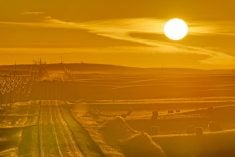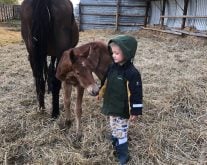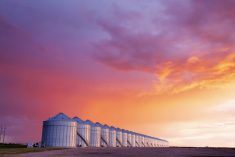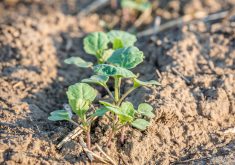Having just returned from the FarmTech conference in Edmonton I thought it would be a good time to pass on to you some of my insights from the sessions and networking over the three days.
After taking in three different grain market outlook sessions I came away with a broad range of information from three credible speakers.
For example their predictions as to how many acres of canola would be seeded in Western Canada this spring ranged from five per cent fewer acres to 10 per cent more acres than last year. So based on last year’s number of 20 million seeded acres, we could have between 19 and 22 million acres of canola seeded this coming spring. That, to me, seemed to be quite a wide variability so I decided to do my own informal non-scientific survey of those I talked to at Farm Tech to see what the word on the street could tell me.
Read Also

Gentle treatments for pain in the neck
Heading toward year-end, people unknowingly tense up against the cold and busyness, causing neck pain that can often be treated with appropriate support and gentle mobility, athletic therapist Kathlyn Hossack says.
As I wondered the tradeshow floor I made a mental note of the various seed distribution companies. Whenever possible I would stop and listen to conversations at those booths between company reps and farmers talking about their seeding intentions. Next, I took the bold approach of talking to producers directly — asking them what some considered to be a very personal questions: “Do you plan to seed more or less canola next year?”
What I gleaned from my eavesdropping research and my conversations with producers was that most of them were going to seed the same or fewer acres than they did last year. Those that were going to seed more were doing so because they were renting new acres and the rotation on that land allowed them to seed canola this spring.
After that information gathering I put pencil to paper to crunch the numbers and came up with my canola acreage prediction of 19.4 million acres seeded. This is a three per cent drop from last year. If I am not dead on with this acreage prediction I will be a little disappointed, but not really surprised as I have not factored in a variability coefficient like most surveys that are done today. My disclaimer: if I am wrong it is because of the limited number of responses I used to correlate the data, to get the outcome in a short period of time. This prediction is deemed to be 85 per cent accurate one out of every 100 times. That should cover me!
The weather
I attended a presentation by Drew Lerner from World Weather Inc. on what we can expect for weather across North America this coming spring and summer. For the Central Alberta region he expects the spring to be a little cooler than normal with decent precipitation, and the summer to be a little warmer and dryer, but with intermittent moisture to offset the dry periods giving us an overall good growing season.
He predicts that there will be some very dry/drought areas across the Prairies with one being along the Sask./Alta. border in the Kindersley area another in the south eastern corner of Saskatchewan through most of the lower Manitoba growing region that will carry down into the Dakotas and Montana. He also says there will be a continuing pocket of drought in Texas and that the dryness in California will continue to persist and grow through the summer.
He remarked that this continuation and growth of these dry/drought areas in the U.S. seems eerily similar to the start of the drought of 1988.
We know that trying to predict weather patterns, even with today’s advanced technology and modeling, is a very precarious job. For those who are brave enough to make a prediction about the weather, I say hats off to you as you can be proven so wrong so quickly only moments after you make your prediction if Mother Nature chooses to make you look a fool!
Regardless of how Mother Nature may treat our weather forecasters, the information they provide is still very useful when trying to plan for the coming season. We know what we may expect and we can make contingency plans to address weather changes.
The future of farming
Two things that really caught my attention at this year’s conference were the advancements in technology such as use of UAV’s (unmanned air vehicles) and the large number of what I will refer to as the Gen Y Farmers (ages 19-37, as defined by FarmTech guest speaker Jason Dorsey). I was seriously impressed to see all of the young people attending the conference as well as young couples with their children taking in seminars, babies in arms committed to learning more about the world of agriculture that they have decided is going to be their families’ livelihood. My hat is off to all of you for taking on the challenge and moving agriculture into the future.
To the organizers of FarmTech I say “job well done.” This is definitely the premier agricultural learning conference that I have attended over my 33 years in the Ag Industry.
















